I’m with Noam on the whole Robot taking over the world mentality.
The renowned MIT professor, having heard for 60 years about the threat of supercomputers, says to come back to him when robots are as creative as a 4-year-old. — 2016/07/31.
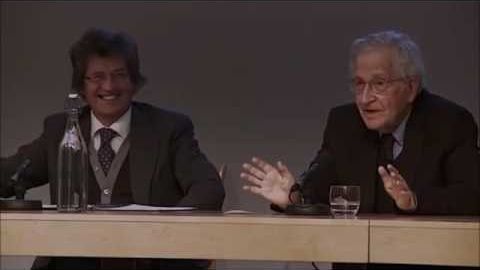
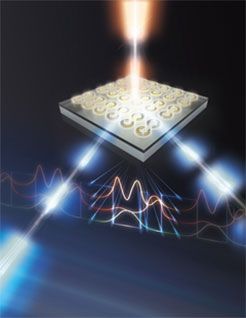
A team built a specialized, layered structure with tiny metallic cavities that improves the light conversion efficiency by orders of magnitude.
Artist’s rendering of an incident laser beam (top of the figure) illuminating an array of nanoscale gold resonators on the surface of a “quantum well” semiconductor (slab in figure). (A quantum well is a thin layer that can restrict the movement of electrons to that layer.) The incoming laser beam interacts with the array and the quantum wells and is converted into two new laser beams with different wavelengths. Changing the size, shape, and arrangement of the resonators can be used for beam focusing, beam steering, or control of the beam’s angular momentum. (Image: Sandia National Laboratories)
The new concept explained in the studies can open doors for advanced lasers for optical communications and efficient manufacturing. It can also support efforts to miniaturize optical components for high-speed computing, telecommunications, cameras, and quantum computing that will solve computational problems currently intractable by today’s supercomputers.

Computers use switches to perform calculations. A complex film with “quantum wells”—regions that allow electron motion in only two dimensions—can be used to make efficient switches for high-speed computers. For the first time, this oxide film exhibited a phenomenon, called resonant tunneling, in which electrons move between quantum wells at a specific voltage. This behavior allowed an extremely large ratio (about 100,000:1) between two states, which can be used in an electronic device as an ON/OFF switch to perform mathematical calculations (Nature Communications, “Resonant tunneling in a quantum oxide superlattice”).
Efficient control of electron motion can be used to reduce the power requirements of computers. “Quantum wells” (QW) are regions that allow electron motion in only two dimensions. The lines (bottom) in the schematic show the probability of finding electrons in the structure. The structure is a complex oxide (top) with columns (stacked blue dots corresponding to an added element) where the electrons are free to move in only two dimensions. This is a special type of quantum well called a two-dimensional electron gas (2DEG). (Image: Ho Nyung Lee, Oak Ridge National Laboratory)
To meet our exponentially growing need for computing power without a corresponding jump in energy use, scientists need more efficient electronic versions of switches to perform calculations. Efficient switches need materials that switch between well-defined ON/OFF states. The results of this study could lead to a new class of energy-efficient electronics because these materials can ensure the electronic switches are ON or OFF. These electronic switches could lower power consumption in electronics enabling, for example, the development of high-speed supercomputers and cell phones with longer battery life.

Like this feature on QC.
If you have trouble wrapping your mind around quantum physics, don’t worry — it’s even hard for supercomputers. The solution, according to researchers from Google, Harvard, Lawrence Berkeley National Laboratories and others? Why, use a quantum computer, of course. The team accurately predicted chemical reaction rates using a supercooled quantum circuit, a result that could lead to improved solar cells, batteries, flexible electronics and much more.
Chemical reactions are inherently quantum themselves — the team actually used a quote from Richard Feynman saying “nature isn’t classical, dammit.” The problem is that “molecular systems form highly entangled quantum superposition states, which require many classical computing resources in order to represent sufficiently high precision,” according to the Google Research blog. Computing the lowest energy state for propane, a relatively simple molecule, takes around ten days, for instance. That figure is required in order to get the reaction rate.
That’s where the “Xmon” supercooled qubit quantum computing circuit (shown above) comes in. The device, known as a “variational quantum eigensolver (VQE)” is the quantum equivalent of a classic neural network. The difference is that you train a classical neural circuit (like Google’s DeepMind AI) to model classical data, and train the VQE to model quantum data. “The quantum advantage of VQE is that quantum bits can efficiently represent the molecular wave function, whereas exponentially many classical bits would be required.”
Listen up all my QC buddies; the air force wants to hear from you. You have QC ideas for fighter jets they want you.
Guess I need to submit them some of mine.
The Air Force wants white papers that describe new ways quantum computing could help achieve its mission, according to an amended Broad Agency Announcement posted Friday. Eventually, the government could provide a test-bed where a contractor might install, develop and test a quantum computing system, according to the announcement.
Last year, the Air Force announced it had about $40 million available to fund research into, and the eventual maintenance and installation of a quantum system — a branch of emerging computing technology that relies on the mechanics of atomic particles to process complex equations.
The Air Force Research Laboratory’s Information Directorate, which focuses on processes such as signal processing, networking technology, cyber research and supercomputing, is collecting those white papers.
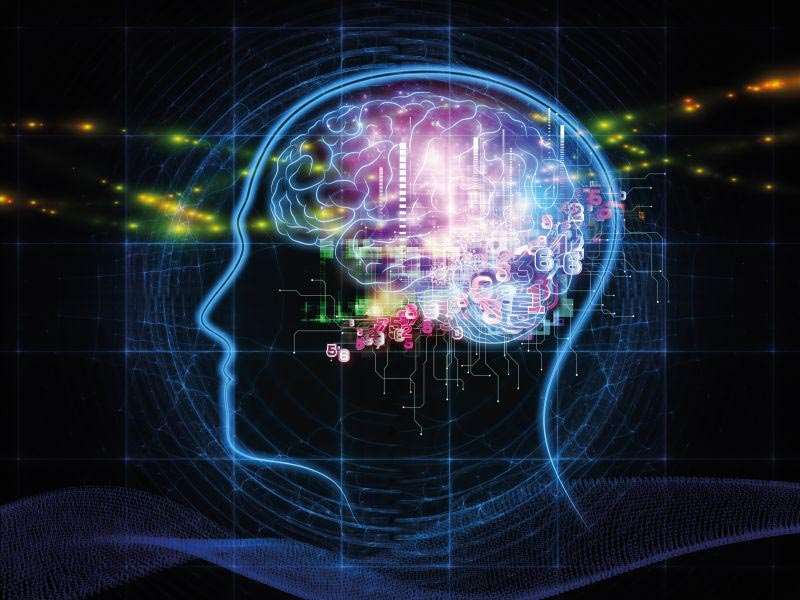
BMI technology is like anything else; you have an evolution process to finally reach a level of maturity. The good news is that at least at this point of time BMI is at least in that cycle where we are no longer crawling and trying to stand up. We’re in that stage of the cycle where we are standing up and taking a couple of steps at a time. In the next 3 to 5 years, things should be extremely interesting in the BMI space especially as we begin to introduce more sophisticated technology to our connected infrastructure.
Will future soldiers be able to use a direct brain interface to control their hardware?
Imagine if the brain could tell a machine what to do without having to type, speak or use other standard interfaces. That’s the aim of the US Defense Advanced Research Projects Agency (DARPA), which has committed US$60 million to a Neural Engineering System Design (NESD) project to do just that.
“Today’s best brain-computer interface systems are like two supercomputers trying to talk to each other using an old 300-baud modem,” said Phillip Alvelda, the NESD program manager. “Imagine what will become possible when we upgrade our tools to really open the channel between the human brain and modern electronics.”
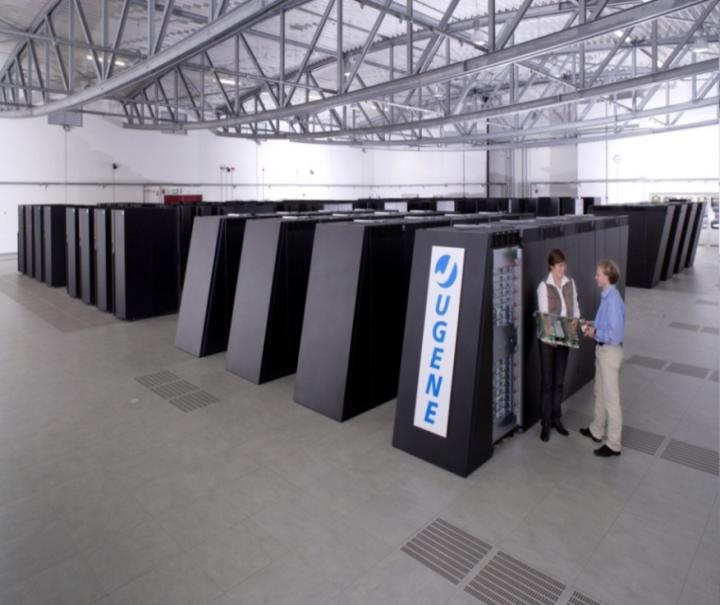
Great that they didn’t have to use a super computer to do their prescribed, lab controlled experiments. However, to limit QC to a super computer and experimental computations only is a big mistake; I cannot stress this enough. QC is a new digital infrastructure that changes our communications, cyber security, and will eventually (in the years to come) provide consumers/ businesses/ and governments with the performance they will need for AI, Biocomputing, and Singularity.
A group of physicists from the Skobeltsyn Institute of Nuclear Physics, the Lomonosov Moscow State University, has learned to use personal computer for calculations of complex equations of quantum mechanics, usually solved with help of supercomputers. This PC does the job much faster. An article about the results of the work has been published in the journal Computer Physics Communications.
Senior researchers Vladimir Pomerantcev and Olga Rubtsova, working under the guidance of Professor Vladimir Kukulin (SINP MSU) were able to use on an ordinary desktop PC with GPU to solve complicated integral equations of quantum mechanics — previously solved only with the powerful, expensive supercomputers. According to Vladimir Kukulin, personal computer does the job much faster: in 15 minutes it is doing the work requiring normally 2–3 days of the supercomputer time.
The equations in question were formulated in the 60s by the Russian mathematician Ludwig Faddeev. The equations describe the scattering of a few quantum particles, i.e., represent a quantum mechanical analog of the Newtonian theory of the three body systems. As the result, the whole field of quantum mechanics called “physics of few-body systems” appeared soon after this.

More supercomputer news this week: The US is responding to China’s new Sunway TiahuLight system that was announced Monday, and fast. First, the Department of Energy’s (DOE) Oak Ridge National Laboratory is expected to take delivery of a new IBM system, named Summit, in early 2018 that will now be capable of 200 peak petaflops, Computerworld reports. That would make it almost twice as fast as TaihuLight if the claim proves true. (We had originally reported in 2014 that both Summit and Sierra would achieve roughly 150 petaflops.)
TaihuLight (pictured below) now sits at number one on the twice-yearly TOP500 list of the fastest supercomputers in the world, with a Linpack benchmark score of 93 petaflops and a claimed peak of 124.5 petaflops. The latest TOP500 announcement Monday caused a bit of a stir. Not only is TaihuLight roughly three times faster than China’s Tianhe-2, the prior champion, but it also uses no US-sourced parts at all for the first time, as it’s powered by Sunway 260-core SW26010 processors that are roughly on par with Intel Xeon Phi, as well as custom proprietary interconnect.
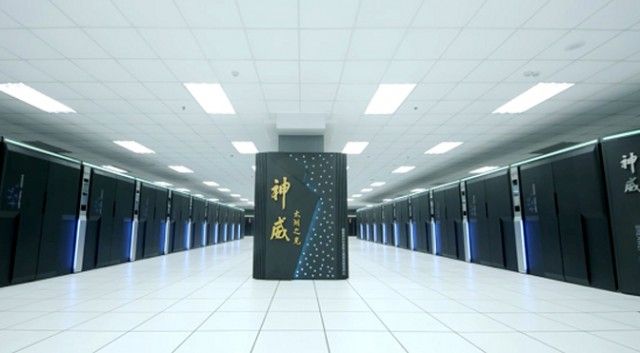
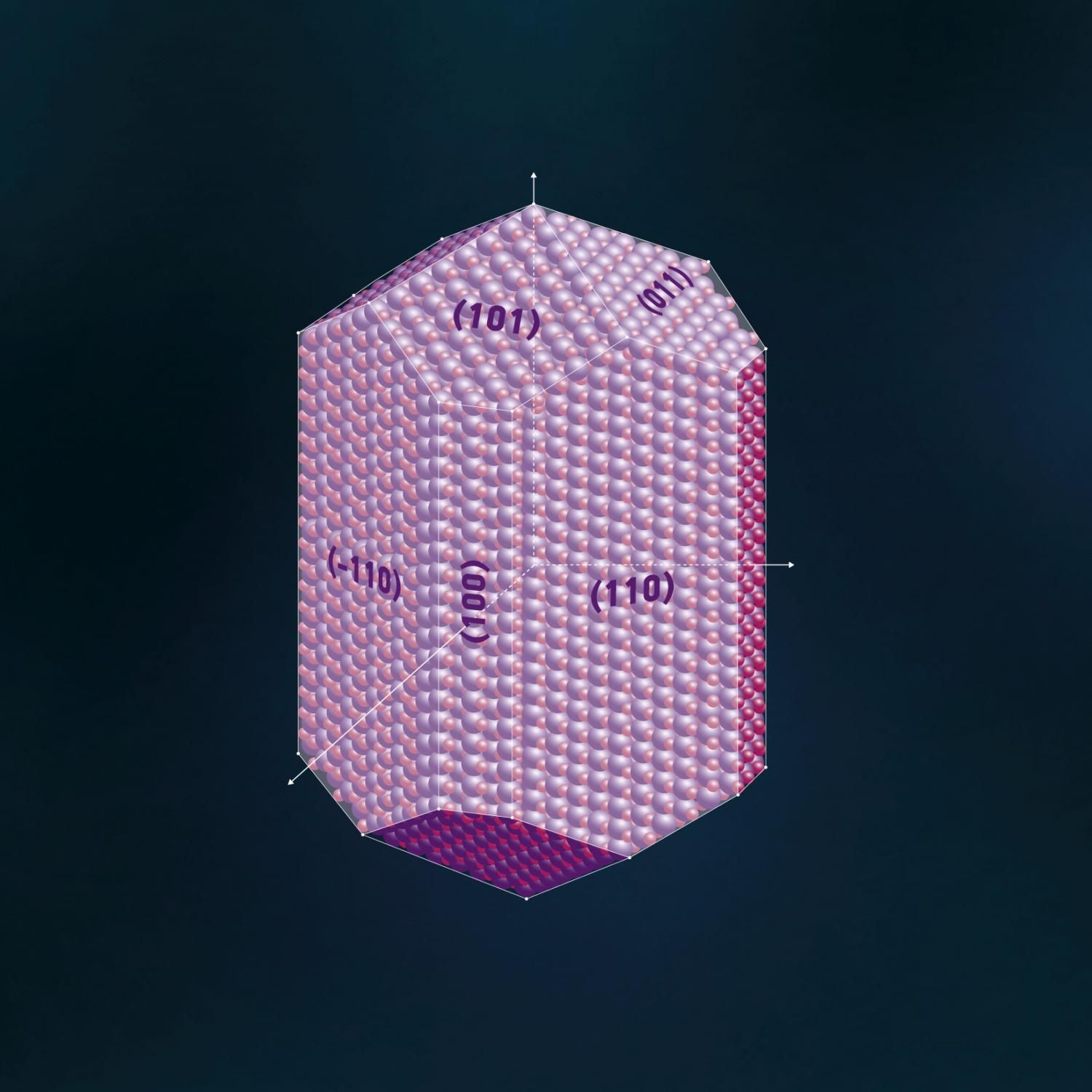
Using numerical modelling, researchers from Russia, the US, and China have discovered previously unknown features of rutile TiO2, which is a promising photocatalyst. The calculations were performed at an MIPT laboratory on the supercomputer Rurik. A paper detailing the results has been published in the journal Physical Chemistry Chemical Physics.
It’s all on the surface
Special substances called catalysts are needed to accelerate or induce certain chemical reactions. Titanium dioxide (TiO2) is a good photocatalyst—when exposed to light, it effectively breaks down water molecules as well as hazardous organic contaminants. TiO2 is naturally found in the form of rutile and other minerals. One of the two most active surfaces of rutile R-TiO2 is a surface that is denoted as (011). The photocatalytic activity is linked to the way in which oxygen and titanium atoms are arranged on the surface. This is why it is important to understand which forms the surface of rutile can take.